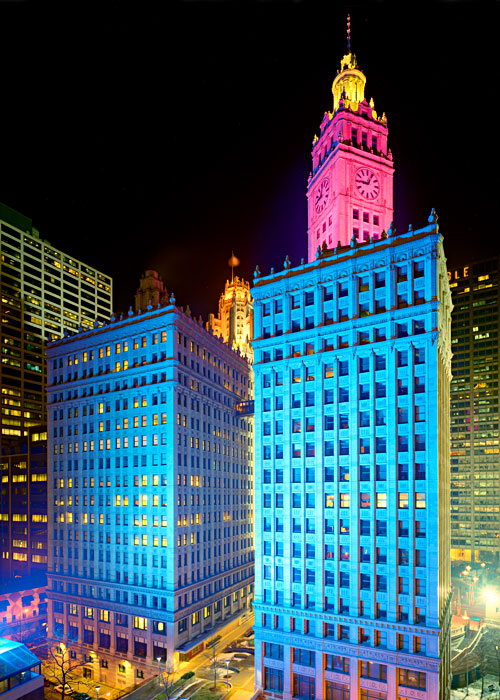The USGBC released its 2011 list of top 10 states for LEED-certified commercial and institutional green buildings per capita, based on the U.S. 2010 Census information. The District of Columbia leads the nation, with more than 31 square feet of LEED-certified space per person in 2011, with Colorado being the leading state, with 2.74 square feet per person in 2011.
Other top states include Illinois, Virginia and Washington, with 2.69, 2.42 and 2.18 square feet of LEED-certified space per person, respectively. The top LEED states per capita, including the District of Columbia.
Notable newly certified projects in 2011 include the Treasury Building in Washington, D.C., which is distinguished as the oldest LEED-certified project in the world; the LEED-Platinum Casey Middle School in Boulder, Colo.; the iconic Wrigley Building in Chicago, Ill.; Frito-Lay in Lynchburg, Va., which earned LEED Gold for the operations and maintenance of an existing building; the LEED Silver Hard Rock Café in Seattle, Wash.; Anne Arundel Medical Center in Annapolis, Md.; Yawkey Distribution Center of The Greater Boston Food Bank in Mass.; the LEED Gold Austin Convention Center in TX; SFO's LEED Gold Terminal 2 in San Francisco, Calif.; the LEED-Platinum Hotel Skylar in Syracuse, N.Y.; and the LEED Platinum Marquette Plaza in Minneapolis, Minn.
In December 2011, USGBC announced that LEED-certified existing buildings outpaced their newly built counterparts by 15 million square feet on a cumulative basis. A focus on heightened building performance through green operations and maintenance is essential to cost-effectively driving improvements in the economy and the environment.
|
|
Sq. ft. of space to earn LEED-certification in 2011 |
Per capita |
|
District of Columbia |
18,954,022 |
31.50 |
|
Colorado |
13,803,113 |
2.74 |
|
Illinois |
34,567,585 |
2.69 |
|
Virginia |
19,358,193 |
2.42 |
|
Washington |
14,667,558 |
2.18 |
|
Maryland |
11,970,869 |
2.07 |
|
Massachusetts |
13,087,625 |
2.00 |
|
Texas |
50,001,476 |
1.99 |
|
California |
71,551,296 |
1.92 |
|
New York |
36,538,981 |
1.89 |
|
Minnesota |
9,591,445 |
1.81 |
Related Stories
| Oct 4, 2013
Sydney to get world's tallest 'living' façade
The One Central Park Tower development consists of two, 380-foot-tall towers covered in a series of living walls and vertical gardens that will extend the full height of the buildings.
| Oct 4, 2013
Nifty video shows planned development of La Sagrada Familia basilica
After 144 years, construction on Gaudi's iconic Barcelona edifice is picking up speed, with a projected end date of 2026.
| Oct 4, 2013
Mack Urban, AECOM acquire six acres for development in LA's South Park district
Mack Urban and AECOM Capital, the investment fund of AECOM Technology Corporation (NYSE: ACM), have acquired six acres of land in downtown Los Angeles’ South Park district located in the central business district (CBD).
| Oct 4, 2013
CRB opens Atlanta office
Georgia’s status as a burgeoning hub for the life sciences industry has fueled CRB’s decision to open an office in Atlanta to better serve its clients in the market. CRB is a leading provider of engineering, design and construction services for customers in the biotech, pharmaceutical and life sciences industries.
| Sep 27, 2013
NYC releases first year-to-year energy performance data on commercial properties
A new report provides information on energy performance of New York City's largest buildings (mostly commercial, multi-family residential). It provides an analysis of 2011 data from city-required energy “benchmarking”—or the tracking and comparison of energy performance—in more than 24,000 buildings that are over 50,000 square feet.
| Sep 27, 2013
ASHRAE/IES publish first standard focused on commissioning process
ANSI/ASHRAE/IES Standard 202, Commissioning Process for Buildings and Systems, identifies the minimum acceptable commissioning process for buildings and systems as described in ASHRAE’s Guideline 0-2005, The Commissioning Process. Standard 202 is ASHRAE’s first standard focused on the commissioning process.
| Sep 26, 2013
6 ways to maximize home-field advantage in sports venue design
Home-field advantage can play a significant role in game outcomes. Here are ways AEC firms can help create the conditions that draw big crowds, energize the home team to perform better, and disrupt visiting players.
| Sep 26, 2013
Literature review affirms benefits of daylighting, architectural glazing
The use of glass as a building material positively impacts learning, healing, productivity and well-being, according to a white paper published by Guardian Industries and the University of Michigan Taubman College of Architecture and Urban Planning. The findings highlight the significant influence daylighting and outside views have on employees, workers, students, consumers and patients.
| Sep 26, 2013
Mobilizing your job site to achieve a paperless project: fact or fiction?
True mobility in the field has rapidly evolved from lock-box kiosks on each floor to laptops on rolling carts to tablets and iPads loaded with drawings sets stored in the cloud. And WiFi-ready job sites have gone from “nice to have” to “must have” status in just a little over a year.
| Sep 26, 2013
Leading in the face of change
As AEC firms navigate toward an uncertain future, the most effective leaders are those who eagerly adapt to change. Here are three attitudes that drive leaders who are of most value to their firms.
















